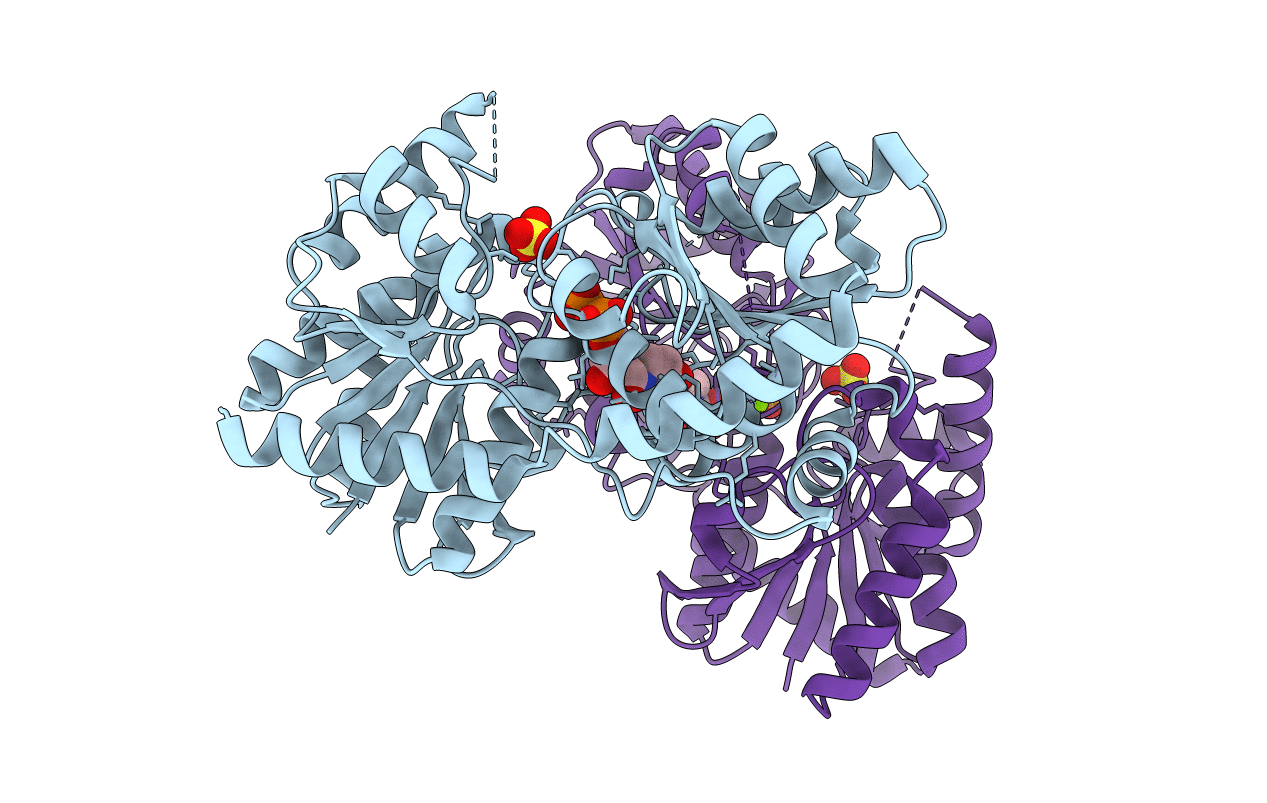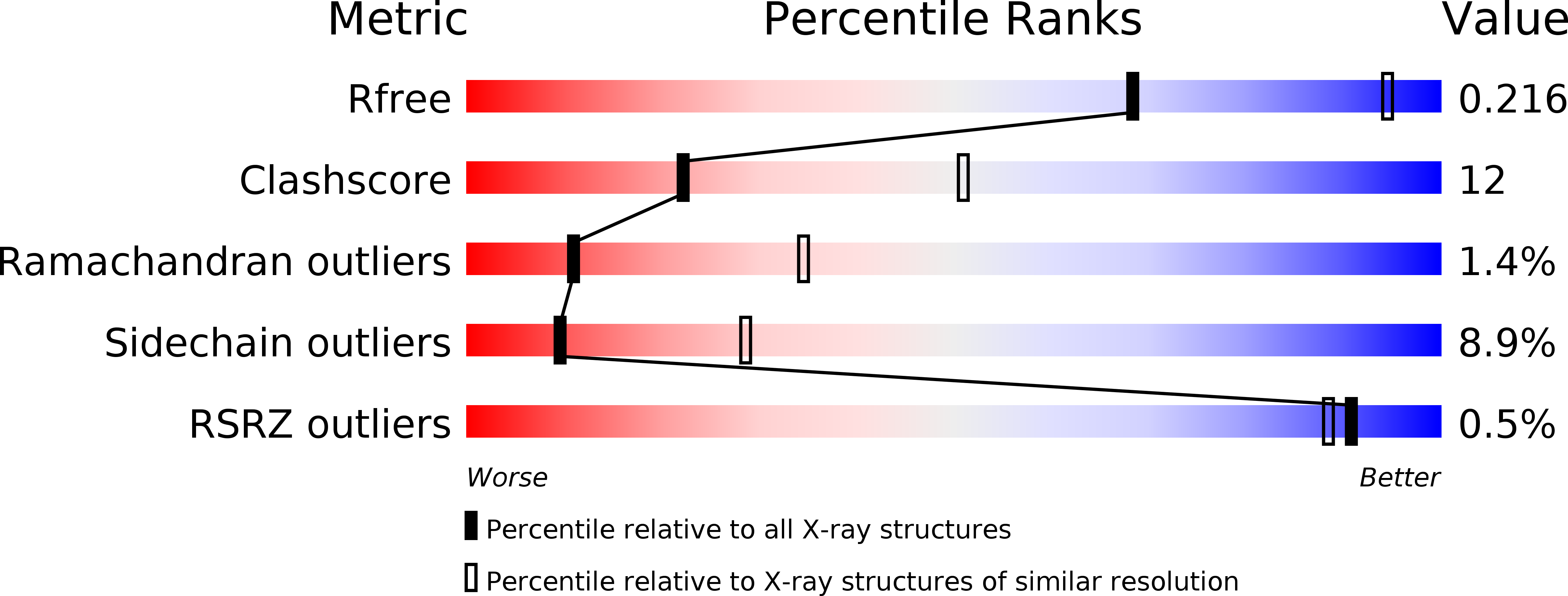
Deposition Date
2008-01-30
Release Date
2008-04-01
Last Version Date
2023-08-30
Entry Detail
PDB ID:
3C4Q
Keywords:
Title:
Structure of the retaining glycosyltransferase MshA : The first step in mycothiol biosynthesis. Organism : Corynebacterium glutamicum- Complex with UDP
Biological Source:
Source Organism:
Corynebacterium glutamicum (Taxon ID: 1718)
Host Organism:
Method Details:
Experimental Method:
Resolution:
2.80 Å
R-Value Free:
0.21
R-Value Work:
0.18
R-Value Observed:
0.18
Space Group:
I 4 2 2


